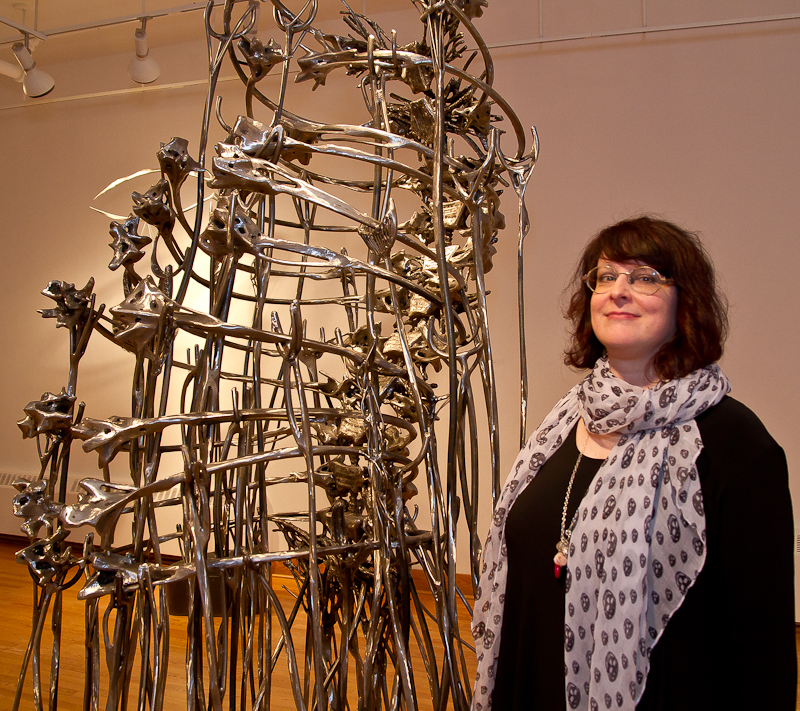Ottawa artist Anna Frlan’s new exhibition, Interbellum, explores the human experience of war through a series of complex and detailed steel sculptures.
“Because I use steel and I always have, I started exploring how steel was used in the 20th century to create all of the weaponry that was used in these wars,” Frlan said.“That’s part of the history of my medium so I felt a responsibility to understand that.”
The title Interbellum comes from a historical term used to describe the period of waiting and anxiety between the first and second World Wars. While Frlan has never dealt with war through her art before, she explained that it was always a subject that was close to her because of her family history.
“My parents came from post-war Croatia,” she said. “I understand post-traumatic stress disorder. It was a theme I had to deal with somehow and it led to all of these pieces.”
The central sculpture of Frlan’s exhibition, “Post-bellum support,” is a towering steel skeletal column held up by dozens of small crutches.
“After the war this is the kind of support that people need,” Frlan said. “Not only physical crutches but also psychological crutches to help them continue surviving somehow,” she said.
Another piece, entitled “Remembering the Unknown” features a series of elegantly crafted crutches set up in rows. Frlan explained that she was inspired by the practice of lighting candles for the dead.
“I made these three levels of crutches, and each one is individual because each one represents an individual person to me,” she said.
Frlan studied visual arts at the University of Ottawa, the place where she first began to work with steel and explore sculpturing. “It was magical when I realized you can weld two pieces of steel and they’re instantly bonded,” Frlan said. Even after 13 years of working with steel, the magic is still there.
“I see so many possibilities,” she said. “I could see working with it for a lifetime. Until I exhaust all the possibilities and I’m satisfied that I’ve explored every single aspect I will continue working with it.”
This is certainly good news for the many admirers of Frlan’s work who attended the vernissage of the exhibit on Jan. 10.
”It’s very impressive, spectacular,” said retired teacher Deborah Neiman.
Neiman, who is familiar with Frlan’s work, said the larger-than-life central piece was “not surprising of what she’d do. It would never be simple, it’s always very intricate.”
Art consultant Peter Riehm agreed.
”I’ve loved Anna’s work for a long time so each show to me is a continuation of my fascination with her and the work process, the way she creates things that start in her mind and end up in steel,” he said.
“I like the size of it and the scope and I’m always blown away by what is put into it, time, inspiration and a whole bunch of metal,” he said.
Interbellum will be displayed at the Ottawa School of Art until Feb. 21.






